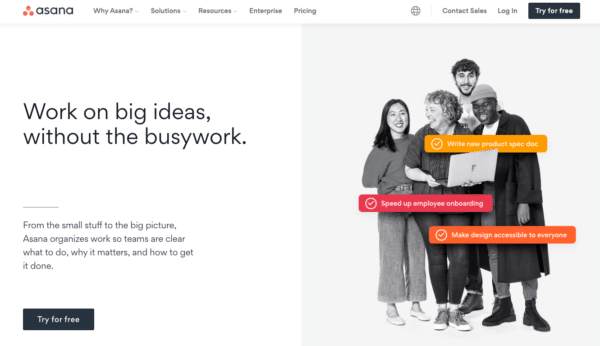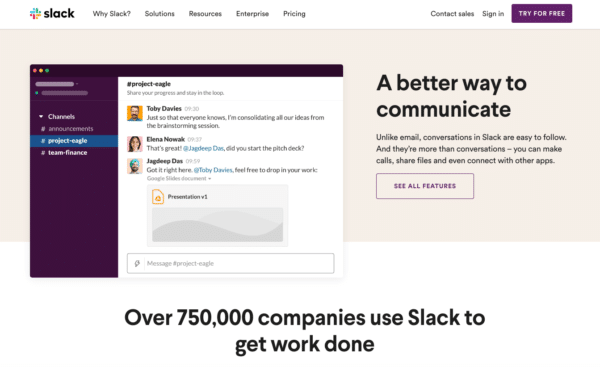5 Fundamental Principles For Collaborating With Agency Clients

This content discusses the challenges of the agency-client relationship and provides tips for effective collaboration and communication.
The agency-client relationship can be complex. Every relationship is unique in some way.While it may appear on the surface that everyone is moving in the same direction, there are often competing agendas, miscommunication about expectations, and unspoken grievances.The biggest shame of communication breaking down between an agency and its client is that no one wins. The client doesn’t get what they signed up for and expected, and the agency loses a growth opportunity and important cog on the balance sheet.So how do you collaborate with clients to minimize these challenges? What’s the best practice?Having worked with over a hundred clients in the last decade, here’s what I’ve learned about client collaboration.
#1. Set clear goals from the beginning
Much of what a client “wants” from an agency is unspoken. There are too many assumptions made during the sales process, and you head into a new engagement with blinders on.You may assume, for example, that all your client wants is leads. But success to them looks entirely different; it’s all about brand awareness and exposure.Of course, this is just one very broad example of how easy it is to be on a different level than your client.Make sure you ask the hard questions before that deal is closed, and don’t stop agitating until you have a clear response about what is expected. This gives you an anchor point to refer back to in the heat of the engagement when emotions are high, and communication breaks down.
#2. Agree on processes and workflows
The way you onboard a new client and the processes and workflows you agree on during that period will determine the relationship's success or failure. You need to identify precisely how the work will get done - who’s in charge of what?Usually, the client will want to participate in some respect, even if it is just overseeing the work or signing off on the creative. But it would help if you found out how involved they want to be and build a process around that.In practice, you should document the processes, workflows, and accountability for all the work you will do for a client and use this documentation to keep them informed and confident. Most of this documentation will be replicable across clients with a few tweaks. So you may choose to develop a resource library of process documentation that you can draw from.An essential part of documenting processes is sharing them with clients or other necessary stakeholders in a secure cloud-based environment, such as Confluence.

Confluence for documenting processes
#3. Deliver a report regularly
A huge mistake that agencies make when collaborating with clients is to go silent. You settle into an engagement, and everything is humming along nicely - in your eyes at least. But underneath the surface, your client is becoming agitated and unaware of exactly what you are doing.By the time the client voices their concerns, it's often too late - you've already lost them. So it would be best if you created a regular cadence of reporting to keep the client informed of the agreed goals' progress.How often you report back to clients depends on the relationship. It should be at least monthly, but some clients will crave reassurance more frequently. The cadence of reporting is something you should discuss and agree on at the start of the engagement.Agency reporting tools, like Klipfolio, help bring your data together in one place and make ongoing reporting a breeze.

Klipfolio for reporting
#4. Set ground rules for communication
Communication rules are essential to successful collaboration and increased team productivity. This is no different in an agency-client relationship.The last thing you want is to be on call 24-hours a day whenever your client has a question or concern.Here are some communication rules you should consider discussing with your client when planning the engagement:
- Appropriate channels of communication - There are numerous ways you can communicate with your client, and each has a purpose. For example, you should only use the phone for scheduled meetings and emergencies. On the other hand, email is best for planned updates and reporting, while chat apps like Slack are preferable for day-to-day questions.
- Emergency process - Even though setting communication rules and expectations with your client is important; you don’t want to give them the impression you are shutting them out of the relationship. Having an emergency process where they can get hold of you if something is urgent will provide them with peace of mind.
- Scheduled meetings - When planning an engagement, you should aim to schedule appointments in advance that have specific purposes. You don't want your calendar full of meaningless catch-up meetings, but a regular face-to-face or Zoom call to make essential decisions will benefit the relationship.
- Document sharing and feedback - As part of your workflow and process setup, you will determine the best approach for receiving client feedback. I find it's practical to use document-sharing apps with comment functionalities, like Google Drive, but some clients may prefer to provide feedback on a call. Just keep it out of the email inbox!
- Client input - Each client will have a different appetite for making decisions and influencing the campaigns you are running. Be sure to set some rules, so the client isn’t overstepping the mark and questioning your expertise - that’s what they’ve hired you for. In saying that, provide a channel where the client can openly give input.
Establishing communication rules isn't about shutting the client out. It's about using your team's time effectively so they can deliver the best results for the client without drowning in email and client calls.
#5. Use the right tools
Agency tools form the foundation of a successful agency-client relationship. Whether it’s your workflows and processes, delivery, reporting, or communication channels, the right software will significantly improve your collaboration.When choosing your agency toolset, consider the following aspects of collaboration:
- Planning - Mapping out exactly what you will do for your client and assigning tasks to the relevant people will give all key stakeholders visibility into what’s going on. A project management tool like Asana is an excellent example of this.

Asana for planning
- Workflows and processes - You may choose to document your processes with something simple like Google Docs, but if you want to take this to the next level, check out Confluence, which integrates with a range of the tools you may already be using.
- Feedback and approval - Without feedback and approval processes, you're unlikely to meet client expectations. Google Docs is great for feedback and comments on the run, and you may find that other tools you're using for campaign delivery, such as ShortStack for agencies, have robust team collaboration features.

ShortStack for team collaboration
- Communication - Beyond email, you will likely communicate via video conferencing, and a chat application. Zoom and Slack, fit the bill here.

Slack for communication
- Reporting - If you want to bring all of your reporting and analytics into a single dashboard, Klipfolio is worth checking out.
If you choose the right tools for collaboration, you will significantly improve your agency's perception with clients and retention rate.
Conclusion
There’s no hiding the fact that agency-client collaboration has a lot of moving parts, competing agendas, funky personalities, and unspoken expectations. But it’s super-important to get right if you want to minimize churn and develop new case studies.Not surprisingly, effective collaboration starts before you are even in the door. During the sales conversation, the goals and expectations you establish lay the groundwork for everything that is to come.Then, the onboarding stage of your engagement will determine its long-term success. Including the processes you establish, the communication guidelines you put in place, the tools you choose to use, and the consistency you do what you say you will.




